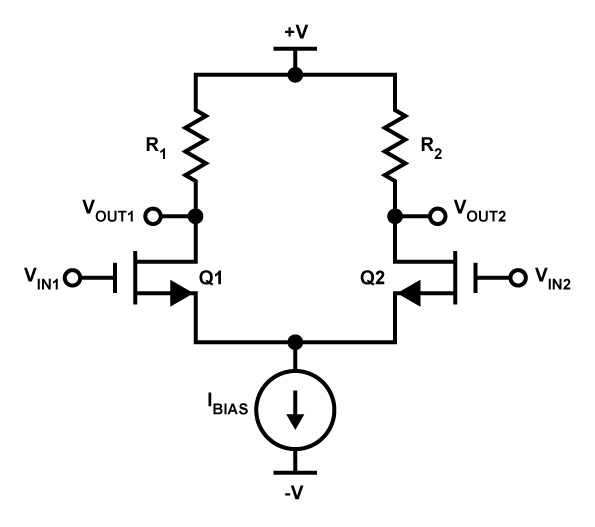In normal circumstances, Vin1 and Vin2 change differentially, if Vin1 goes up by 10mV, Vin2 goes down by 10mV. Makes sense.
But I'm wondering, what would happen if Vin1 went up by 10mV, but Vin2 stayed the same and didn't go down by 10mV. The Ibias current source should then have a higher load current right, if it's implemented as an NMOS device?

